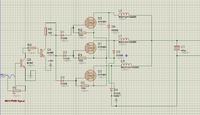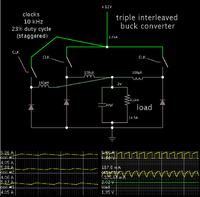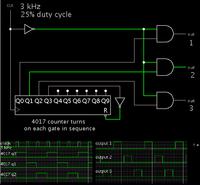asking
Full Member level 5
Hello again,
With reference to this post, i came to know about importance of inductor, but now issue is with Current capacity. I need 15 AMP 100uH Inductor which is not available for me. Instead i got 6A 100uH 3 Coils instead and i have create circuit below in which i have place 6AMP 3x DC-DC Buck converters parallel and PWM Common signal. In this way i can have high frequency with less switching losses. Suppose i switch 3 of them @ 500 KHZ total efficiency i will get will be of 1.5MHZ with lesser switching losses. This is what i think, pls guide me if i m wrong. thanks

With reference to this post, i came to know about importance of inductor, but now issue is with Current capacity. I need 15 AMP 100uH Inductor which is not available for me. Instead i got 6A 100uH 3 Coils instead and i have create circuit below in which i have place 6AMP 3x DC-DC Buck converters parallel and PWM Common signal. In this way i can have high frequency with less switching losses. Suppose i switch 3 of them @ 500 KHZ total efficiency i will get will be of 1.5MHZ with lesser switching losses. This is what i think, pls guide me if i m wrong. thanks


